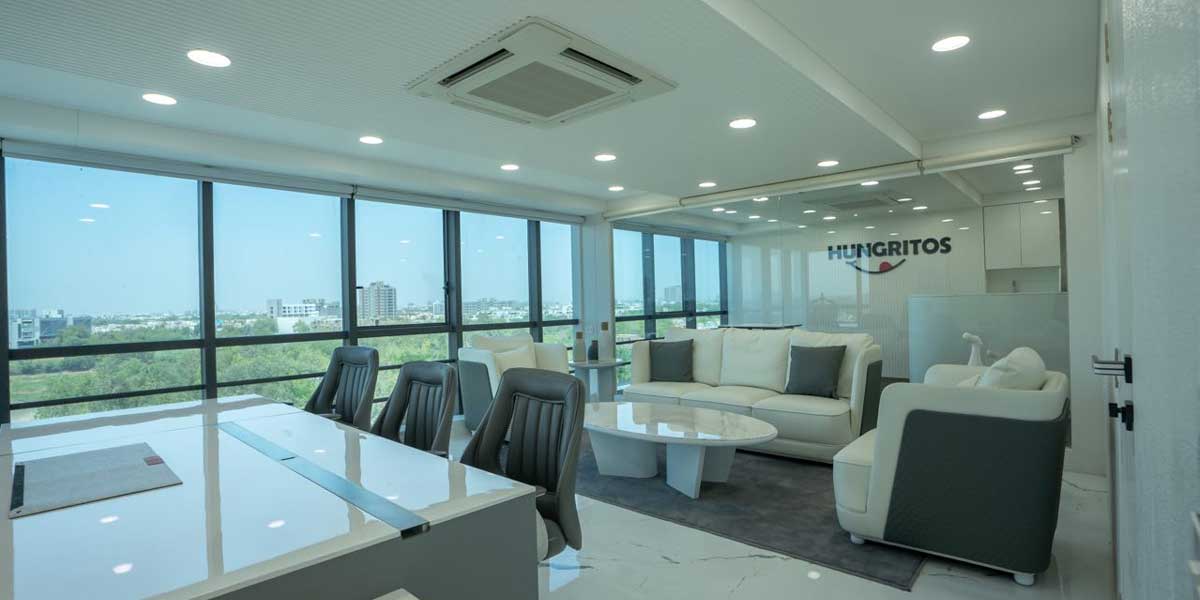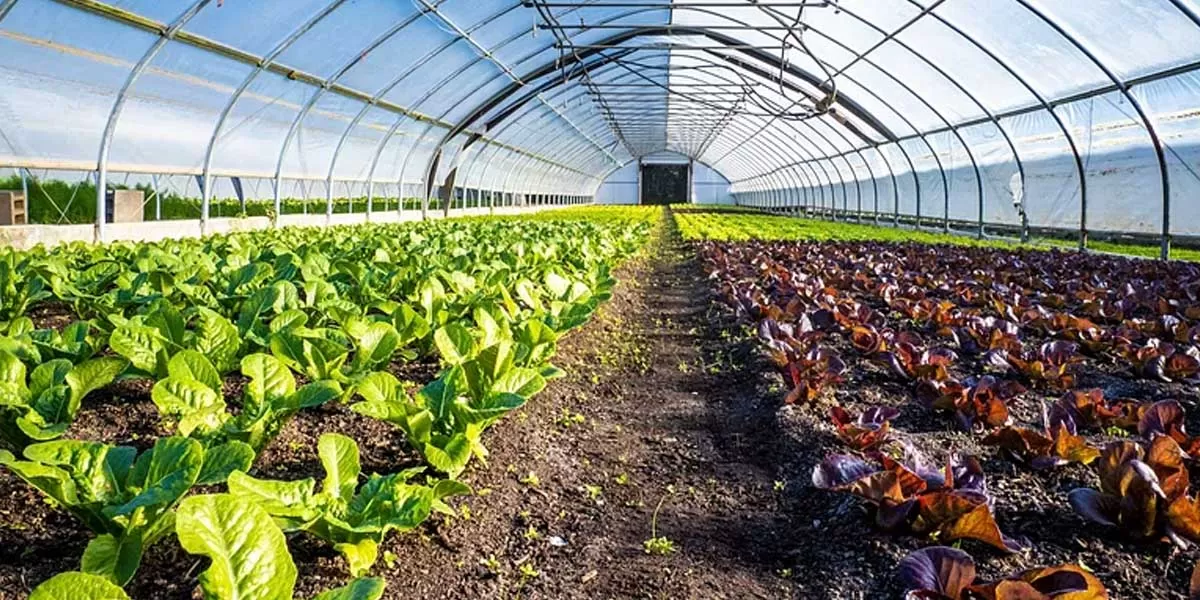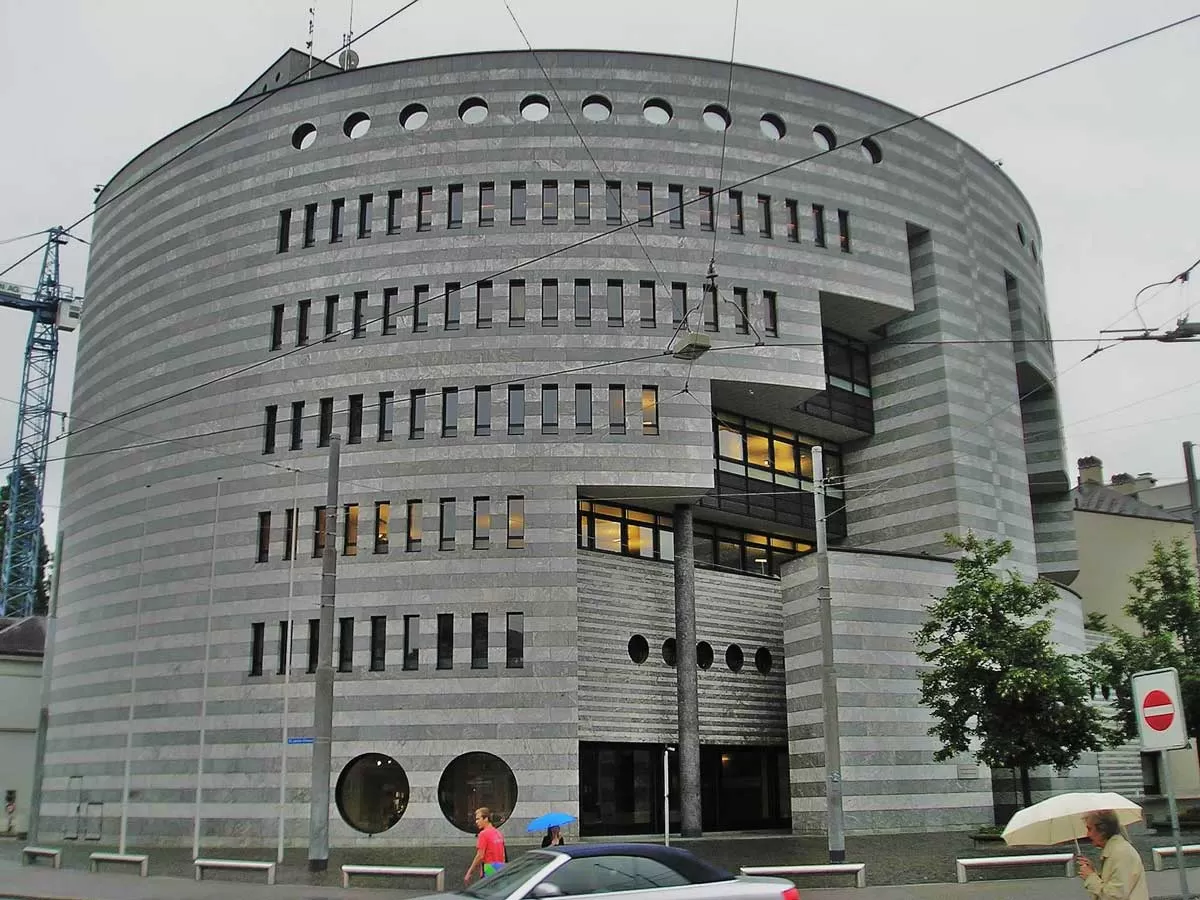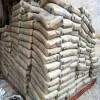Photo courtesy: ArclainA general consensus across the interiors industry is that the pandemic has helped create awareness of surface hygiene and maintenance. Consequently, demand for a new range of health-promoting interior products is increasing, especially among home owners as spending time at home has spurred an interest in doing up properties. Let’s explore these emerging material and design preferences.
Health-promoting materials
“The last few quarters have witnessed growing customer preference for materials that are easy to clean, dust-resistant, antimicrobial and are non-VOC (volatile organic compounds),” opines Abhishek Kapoor, COO - Residential, Puravankara.
COVID-19 has expedited a trend in wall and ceiling material preferences that had already started in the retail and commercial segment and less so in the residential segment, according to Karun Muthanna, Principal Architect, Arclain. “That’s the use of non-absorbent materials that eliminate contamination or restrict the spread of germs in common touchpoints. Sensors and hands-free levers are classical examples. For knobs, handles, countertops, railings and so on, wood and natural porous materials have been replaced with easier-to-clean materials like glass and steel. Where wood is used, it is spray-coated with polyurethane or ‘polycoat’ for protection and to make it easier to clean, especially in cafes and restaurants.” Though not at the same level, Muthanna attests to witnessing many people preferring industrial-grade materials like stainless steel, brass or metal cladding, PVC boards and toughened glass for wall panelling for their homes.
“Everyone wants products that can be easily maintained and cleaned and can withstand potential damage from external sources but with dynamic, modern designs,” says Krishika Shah, Founder, Evolve India. Evolve has seen an increase in demand for products with copper finishes for large public spaces with higher footfalls, because copper’s antimicrobial property inhibits the growth of bacterial and fungal particles. Demand has also increased for decorative concrete finishes with anti-dust and anti-fungal properties.
Demand has increased for products that can limit the spread of viruses on surfaces and kill them on surfaces, says Navarun Sen, President, Panel Division, CenturyPly. “In response, CenturyPly has launched virokill, a technology that can kill 99.99 per cent of viruses on the surface of plywood and laminate.” Virokill’s uptake has been excellent. “CenturyPly’s waterproof products featuring virokill technology and firewall technology are its fastest selling,” he adds. “Within this, Club Prime, a premium product, is CenturyPly’s fasting-selling brand.”
Chemically treated surface coatings have gained popularity over the last year, as have a whole new segment of microbial-resistant materials that can potentially thwart the spread of COVID-19, says Amar Tendulkar, Chief of Design and Sustainability, Mahindra Lifespace Developers. “New product categories include bacteria-resistant fabrics. Paints, wallpapers and sprays have also seen anti-bacterial variants emerging in the market.”
From the health perspective, PVC panels help eliminate dampness on walls, says Kamal Jindal, Director, Shri Balaji Multi Designs, Decoinn PVC Panels. “COVID-19 is a respiratory disease and dampness also causes other lung diseases like asthma. This advantage of PVC panels has helped make them a fast-selling product now that people are more health conscious.”
In residences and commercial properties, Deepak Gupta, Director, D R Design Consultants attests to having used laminated wood on ceilings as wooden finishes are easier to maintain than gypsum board ceilings. “Painted terracotta hollow tiles are another option for home ceilings. In commercial spaces, glass is an easy-to-clean option that also ensures uniform illumination.” Despite the availability of virus-resistant paints, after COVID, he believes more people prefer wallpapers for private spaces as they feel they can be cleaned more easily than paints. For toilets, labs and hospital settings, typically, Gupta specifies antimicrobial ceiling tiles (Armstrong), which are resistant to bacteria, mould, etc. Recently, he also recommended these for a satellite manufacturing facility.
Changing winds
Before the pandemic, it was difficult to convince clients about the need for antimicrobial tiles, according to Gupta. “But now, nobody questions antimicrobial specifications. In fact, we are currently finishing the tender documents for a hospital project. The client requested the best anti-COVID finishes for all the interior elements, including walls and ceilings.”
With safety and health becoming the central theme for many, Muthanna expects these trends to persist and eventually become a regular feature in the residential segment.
While Puravankara’s architects have always employed a rigorous mechanism to analyse the durability and longevity of all components used, including walls and ceiling panels, as quality add-ons significantly contribute to aesthetics and overall utility, in alignment with customers’ evolving needs, now, teams are constantly driving innovation throughout the lifecycle of an asset. “We will continue to identify and secure products that are health-focused and offer premium quality,” affirms Kapoor.
User and budget-friendly solutions
Demand has also increased for reasonably priced products that can be easily applied.
“Our PVC panels enjoyed good sales volume through the pandemic for being quick to apply as well as very economical and durable,” says Jindal.
“We’ve seen increasing demand for DIY products such as our Instant Rust Material Kits and Calce Lime Concrete Kits, and easy-to-install products such as our ready-to-install wall panels,” shares Shah. “DIY products are easily used by any applicator to create beautiful surface textures. Customers increasingly prefer to be self-sufficient and not depend on external parties to get the job done.”
In fact, the Calce Lime Concrete Kit is Evolve’s fastest selling product for being versatile; the leftover material can be used across other projects, as Shah explains. “In keeping with this trend, Evolve will soon launch Liquid Metal Material Kits.”
Design preferences
A significant design trend in both the commercial and residential segments is the preference for bigger windows for more sunlight and fresh air, and less wall, says Muthanna. “People also want part of the ceiling to be transparent or allow light within.”
“In design processes, non-crevice junctions and epoxy and resin-based materials are gaining popularity for preventing the collection of dust, and being easy to clean and maintain,” adds Tendulkar.
Opinions are mixed on the more extensive use of false ceilings as a design element that offers “good acoustics, reflection, light diffusion and fire safety,” as per Tendulkar.
Gupta believes some people are avoiding false ceilings in homes for the fear of dust, insects and viruses accumulating inside; instead, exposed painted ceilings with vivid colours are more acceptable. But Sudeep Kolte, Vice-President, Sales & Marketing, Gyproc Business, Saint-Gobain India, believes greater investments in home décor elements may drive demand for designer false ceilings for homes. Gyproc’s wide range of ceiling solutions includes Ecophon baffles and clouds and the Rigitone range of perforated tiles that blends aesthetics with acoustics.
Meanwhile, Tendulkar says products that were not originally being used for decorative purposes have re-emerged for use in false ceilings, in more aesthetic forms. Among these he counts wood, metal, fabric, synthetic leather and even glass.
New solutionsWall handcrafted textured finishes: Last year, Evolve launched Artistique Fusion, a new range of designer wall handcrafted textured finishes that celebrates the imperfections of nature. Recently, it has launched new options in The Artistry Collection, its existing handcrafted wall art range using liquid metal and decorative concrete finishes.
Plywood-enhancing technologies: CenturyPly launched virokill technology (see main article) and firewall technology, the latter being an industry-first initiative to make plywood resistant to self-disintegration during a fire and to contain generation or smoke and spread of fire. “We’re offering virokill and firewall technologies to customers at no extra price,” says Navarun Sen, President, Panel Division, CenturyPly.
Drywalls: Gyproc has launched Habito board for direct unplanned loading and Glasroc H board for mould, water and termite resistance. Gyproc’s easy to clean and maintain solutions include Ecophon Hygiene range, Polyshield tiles and Gyprex tiles.
PVC panels: Decoinn is working on products to attract more users to PVC panels.
Flexi walls
COVID-19 has also increased awareness of the importance of well-planned, multifunctional spaces that can support the needs of entire families, for remote working, entertainment, studying or even working out, observes Tendulkar. An interesting outcome of this awareness is that “every room in an apartment needs to be many rooms at once.” Crucially, this creates a need for flexible walls or, as Tendulkar calls them, collapsible or flexi walls. He counts plywood modular walls with insulations, acrylic sheets, etc, as materials that are being considered for this need. However, he cautions, “Flexi walls need to be designed to maintain privacy with proper acoustic sealing, to serve the intended purpose of a solid wall, while also being modular, multi-functional, aesthetically pleasing and durable.”
Flexi walls in the Aqualily Flexi-Homes Project at Mahindra World City, Chennai, were designed to offer homeowners options to alter internal layouts depending on their needs. “This adaptability is delivered via a dynamic or collapsible wall and the intelligent use of furniture,” explains Tendulkar.
Drywalls score
In the aftermath of the pandemic, design is expected to focus on occupant comfort and safety and cost-efficiency, factors related to parameters like acoustic privacy, indoor air quality, health and hygiene, fire safety, speedy project delivery and less labour-intensive construction, opines Kolte. This, according to him, is where drywalls and ceilings play a pivotal role. As he explains, Gypsum drywalls offer superior sound insulation, thereby ensuring privacy while absorptive ceiling solutions improve speech clarity. This results in improved room acoustics that provide a good sound environment to occupants.”
Fire-rated drywalls and ceilings offer safety, especially in industrial establishments, warehouses, hospitals and data centres. Drywalls are amenable to the speedy expansion and/or partitioning of existing buildings for being lightweight, non-load bearing and a dust-free construction technique needing less labour, thereby resulting in tremendous cost savings. They provide a superior substrate for numerous finishes, such as wallpaper, lacquered glass, laminates, etc. Space flexibility, converting malls to hospitals, even in functional units, owing to lower dead load, is a hallmark of drywall construction. Drywalls are not just a preferred choice for interiors but are also gaining acceptance for exteriors.
Gyproc drywalls and ceilings contribute to credits for green building ratings as the company’s portfolio is GreenPro certified and the plasterboards used in walls and ceilings are EPD-verified.
Kolte expects Grade A office spaces that are majorly occupied by MNCs to lead a shift from open offices to increased privacy through high-performance enclosed spaces, and local players to follow suit.
That’s a promising proposition!
- CHARU BAHRI


















